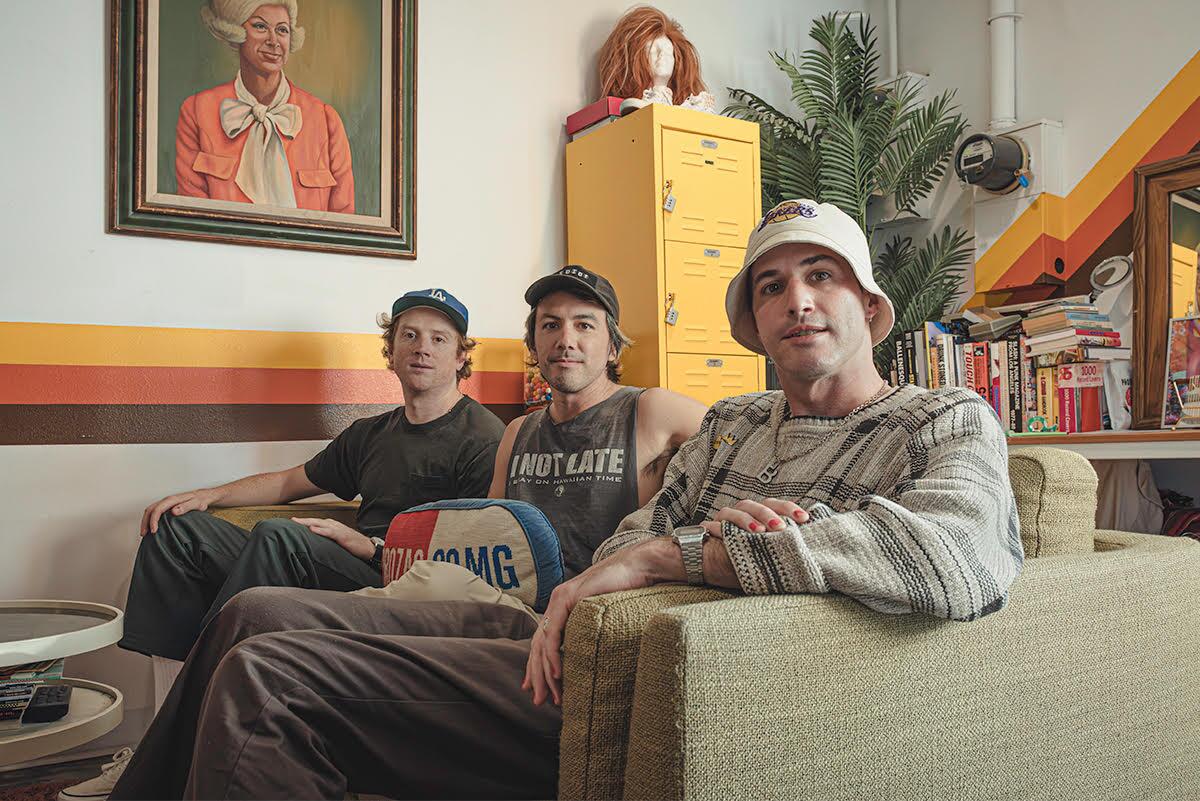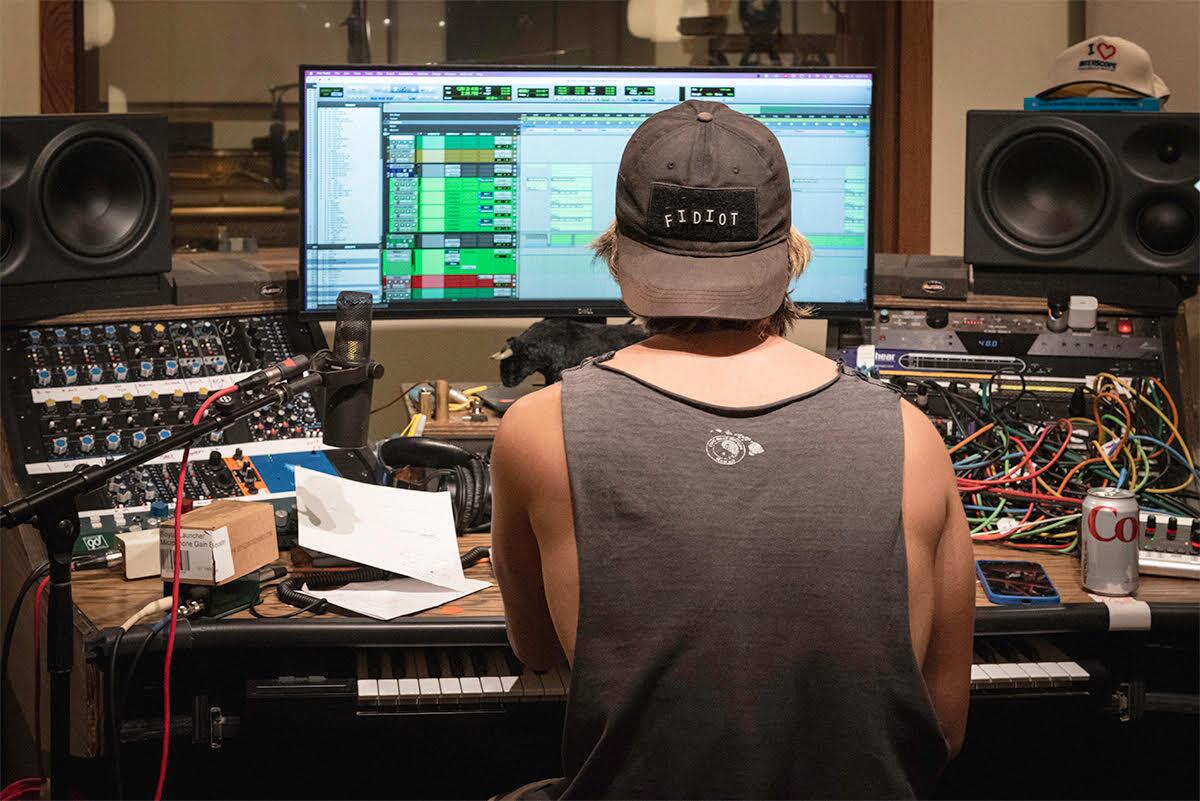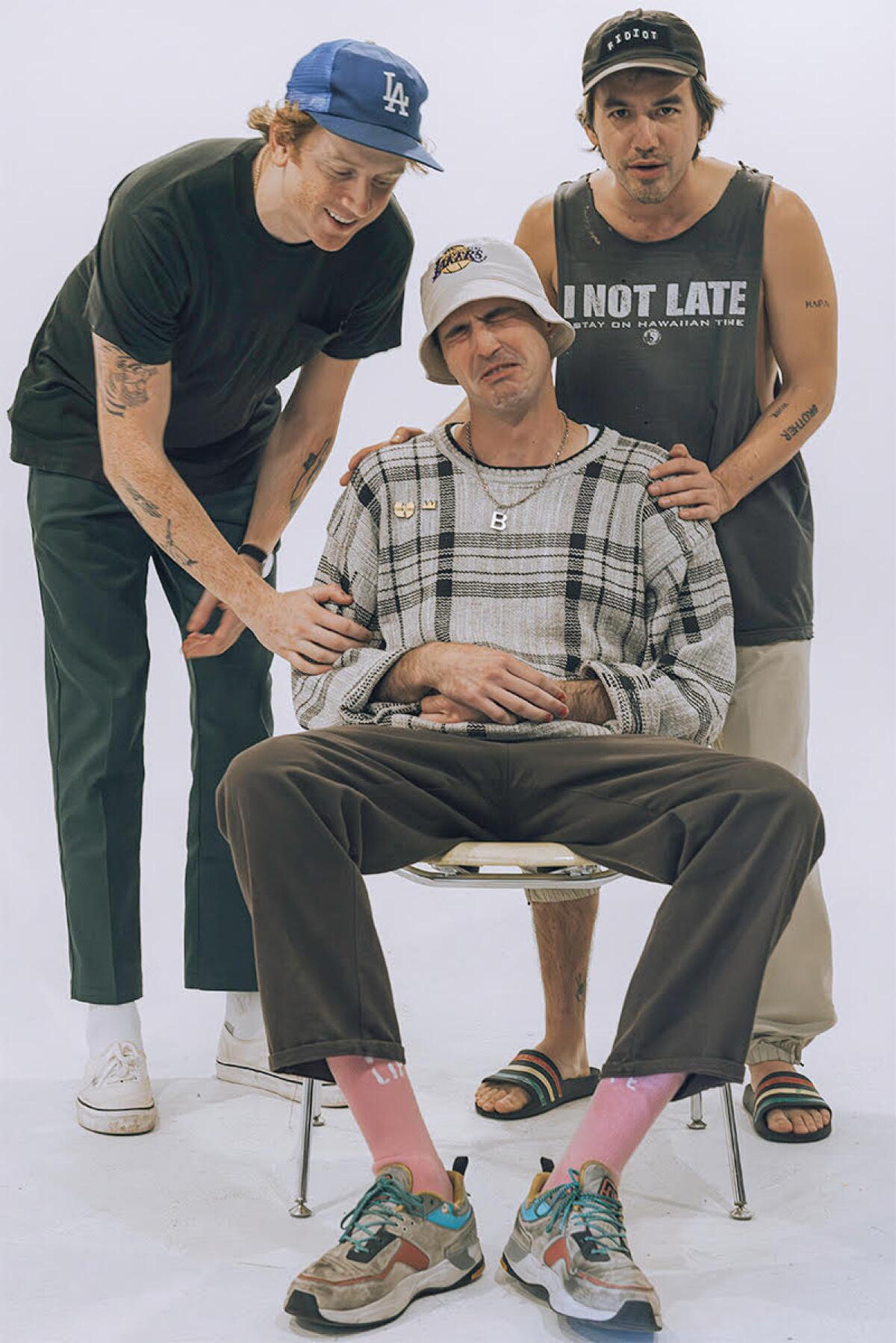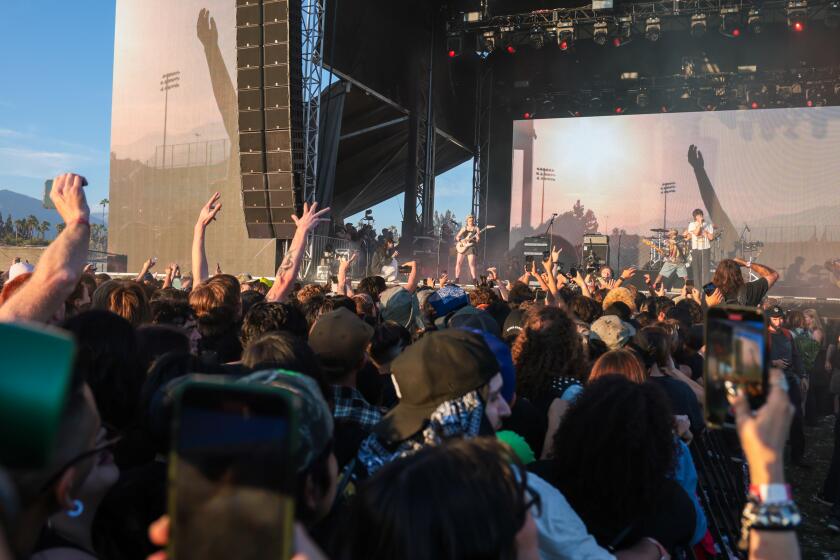A grown-up FIDLAR rages wisely while maintaining lack of concern during the making of ‘Surviving the Dream’

When the three remaining members of rock band FIDLAR decided to take a little break at the end of 2019, they didn’t count on a global pandemic extending their hiatus to nearly three years.
By the time the trio of guitarist/vocalist Zac Carper, bassist Brandon Schwartzel and drummer Max Kuehn returned for the buildup to March 2023’s “That’s Life EP,” they’d been gone for so long that no one knew what to expect. Would people still care about a punk/garage rock band that had only put out one album in the last seven-plus years? As a group whose songs about drugs, alcohol and heartbreak always appealed primarily to the youth, had its original fans outgrown them while younger generations viewed it as a legacy act?
As it turns out, FIDLAR’s support was as strong as ever upon its return. Fans new and old flooded its sold-out shows, its first music video back picked up six figures in YouTube views and international tour dates in places like Australia and Paris were bigger than ever. Even among the stacked lineup of last weekend’s No Values festival in Pomona, FIDLAR drew a bigger crowd to its side stage than many bands did on the larger stages — even while being sandwiched between punk pioneers the Damned and the return of Sublime on the complete opposite end of the Fairplex.
But while the band didn’t lose much momentum with fans since January 2019’s “Almost Free,” the members found themselves separated from any labels and corporate interests, right back in the DIY spot where they’d originally carved a name for themselves. So for their newly announced album, “Surviving the Dream,” (out Sept. 20) Carper, Schwartzel and Kuehn found themselves back in a friend’s studio recording and producing their own songs — just with much nicer equipment this time.
“This whole thing is more reminiscent of the first album, except we built up [the album] while we were recording it,” Schwartzel says, reclining in a chair surrounded by the vintage amps, rack effects and computer the band has been using to record. “This approach has been different than any other album. The first one was kind of like this, but the other ones were all with hired producers and big studios.”
“A lot of these songs were started on a laptop in a hotel room,” Carper adds, wearing a sleeveless T-shirt in the captain’s chair in front of the computer monitors. “A lot of the vocals are just like the ones I recorded in those hotel rooms or at my house, so we wanted to capture that energy in the moments when we wrote the songs. It’s just more intense and bratty, because you’re still in it.”

FIDLAR went into recording “Surviving the Dream” (which was almost titled “For” to continue the trend of their second album, “Too”) with little more than ideas, some lyrics and rough song outlines — except for “Dog House,” which it had played live at previous concerts. Whereas the songs on “That’s Life” had all been nailed down in its rehearsal space beforehand, the band’s fourth full-length primarily formed around the recording process lending a rawness to some of the tracks that channels their self-titled debut album, like new singles “Fix Me” and “Get Off My Wave.” It helps that the entire process took place at Balboa Recording Studio — conveniently attached to its Glassell Park creative headquarters, Mind Palace — but “Surviving the Dream” isn’t just FIDLAR’s first time recording an album on its own since the early days, it’s also the first time ever it’s working on a full-length without former guitarist Elvis Kuehn. So in multiple ways, it’s the least number of eyes and ears band members have ever worked with throughout the writing and recording process.
“I think we’ve gotten comfortable in that dynamic of it just being the three of us, because how else can we do it?” Schwartzel adds. “Zac and Max both produce other bands, so we don’t need anyone else’s input to produce when all of the knowledge is there. And it just feels cool to do it this way.”
“We have this friend who’s an engineer who’s just so good at capturing our sound and personality,” Carper adds. “Doing our first record on our own was so much work for us that it kind of burnt us out, but on this one, we’re able to offset some of that work with him to piece it together. But also, we just wanted to make something that the three of us are stoked on this time — that’s the only thing that matters. Our managers kept asking for demos, and we’d tell them no. Whereas with a label, we’d have to send the demos, and then they’d be all, ‘Yeah, that’s great, but what if you did this?’ I’d get in my head thinking maybe they’re right. This album is just the three of us making sure we’re all stoked.”
By being the only decision-making voices on the new album, the members are able to take other aspects of the band (and their lives) into account for the recording process. For one thing, it seems like nearly every part of every song begins by asking themselves “Would this be sick to play live?” and changing anything that isn’t unanimous. It also means that they’re allowed to challenge themselves creatively without forcing anyone to create when they’re not in the right headspace to do it. “Surviving the Dream” features plenty of songs that sound like they could be ripped straight from the band’s revered first two albums, but also experiment with more electronic sounds (“Making S— Up”) and tracks that could’ve been a soft-rock hit in the ‘90s (“Hurt”).

While some bands would have to worry about taking too many chances when launching a comeback 15 years into their career, it’s FIDLAR’s lack of concern overall that’s always made it a fan favorite. Although the band’s songwriting is often high quality, the thing that draws many fans is the laissez-faire attitude it takes into most situations. The members have successfully crossed over from the young and rebellious kids that burst onto the scene in the mid-2010s to the established veterans who influenced the vast majority of Gen Z’s punk and hardcore bands. As noted by its set at No Values (which featured Carper calling for a “girls-only mosh pit” during one song and a sea of inebriated young people through most of it), FIDLAR has cemented itself as an iconic SoCal punk band of its generation — even if it doesn’t always consider itself a punk band — just as acts like Bad Religion, Social Distortion, NOFX and Blink-182 did before it.
Yet at a recent show in San Antonio, the band decided to cover “Goofy’s Concern” by Butthole Surfers. While Carper and Kuehn rehearsed the track before the show, Schwartzel insisted he already knew it. The bassist then proceeded to “miss every note” during the song according to his bandmates, driving the song into chaos. But though that musical dissonance may not have played as well with the mixed crowd at No Values, the “FIDIOTS” in Texas loved every second of it, building more and more energy and passion as the track descended further into madness.
“It was jazz,” Schwartzel says with a laugh.
“Our show is becoming less and less about us and more and more about our fans, in my opinion,” Kuehn says. “We’re just the soundtrack for what’s happening in the crowd. We’re also somewhat of an acquired taste. The ratio of actually winning people over is pretty small. We’re still pretty niche.”
“I mean, the first record that we put out was about doing drugs and getting f— up, and I think it speaks to a certain type of person that does drugs and gets f— up,” Carper says. “I just think more people are doing drugs, and now these 16- to 20-year-old kids are connecting with us because they feel like ‘What is happening in my head?’ People are more f— up earlier now. Those kids have given us a new burst of energy, because if we only had the same fans from when we first started, they’d be the old dudes in the back nursing a beer by the soundboard and wanting to sit down. They don’t buy merch or run up to the front or push the dude that’s filming on his phone.”
More to Read
The biggest entertainment stories
Get our big stories about Hollywood, film, television, music, arts, culture and more right in your inbox as soon as they publish.
You may occasionally receive promotional content from the Los Angeles Times.











